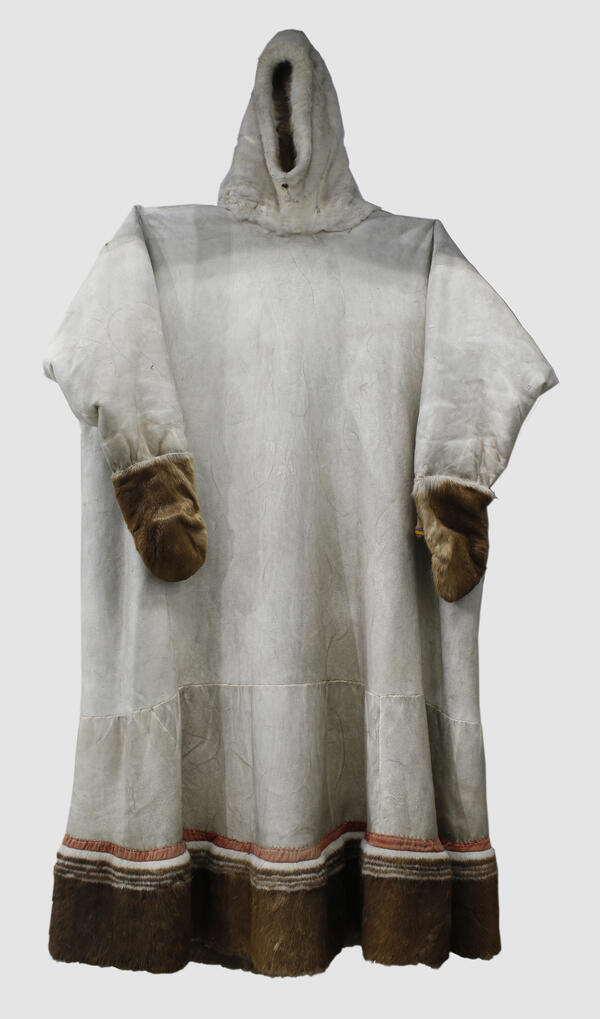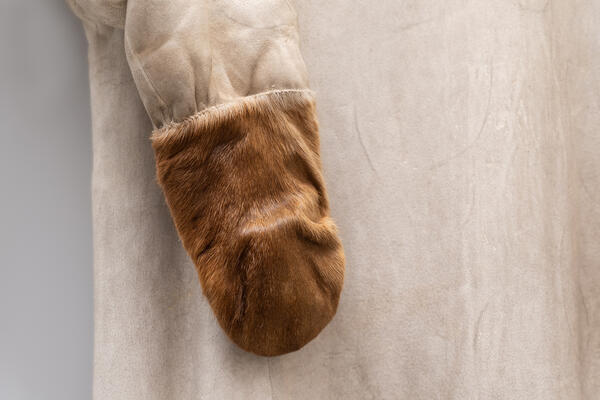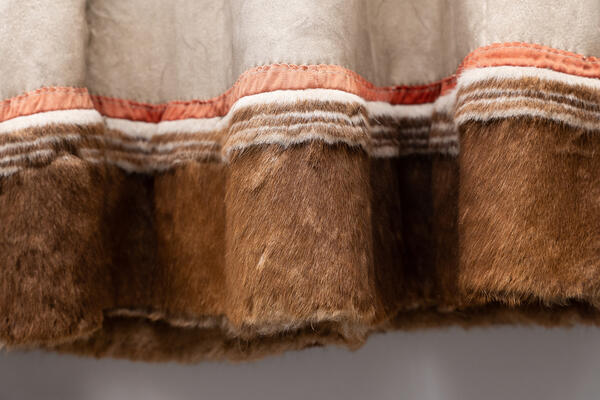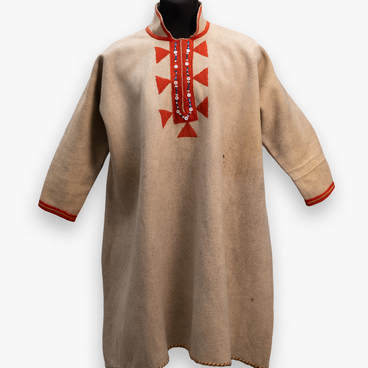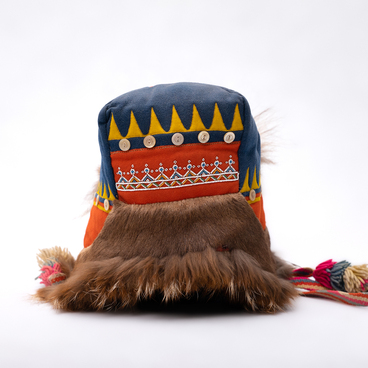Over time Sami clothing underwent gradual changes, dictated by climate and local raw materials. The changes also happened in the process of Sami people’s interaction with neighboring peoples. For example, Sami people borrowed the malitsa from the traditional costume of Izhma Komi people, reindeer herders who moved to the Kola Peninsula at the end of the 19th century.
A malitsa is an outer garment made of reindeer skins with fur inside, put on over the head. It is worn by people in vast areas stretching from Murmansk to Chukotka. Such clothes perfectly correspond to the climatic conditions and the type of economy of northern peoples. The malitsa is sometimes called an individual chum tent because, like a chum, it protects a person from cold, snow and wind.
The malitsa was almost ankle-length, and was designed to widen downwards. The hood, attached to the collar, had to fit tightly to the face and, if necessary, be tied down with strings to such a diameter that only a breathing hole was left. The sleeves, as well as the hood, were sewn right into the finished product.
A person wearing a malitsa with fur inside on the naked body kept warm whatever the frost. The whole cut and somewhat conical shape allowed for better heat concentration. The most valuable element of the malitsa was the reindeer fur. It massaged the skin when moving, promoting blood circulation, which was important for heat protection. When in contact with the skin, it cleansed it from toxins and absorbed excessive moisture. This was due to the special structure of the reindeer hair.
A malitsa could be worn for up to six years. When it served for a long time, it became heavy because of dirt accumulated in the depths of its fur, so it did not keep warm so well and was thrown away.
The malitsa is versatile: it can be both a garment and a sleeping bag.
A special shirt could be worn on top of the malitsa — a dark-colored cotton malitsa shirt. It had a straight cut, widened at the bottom, with an open collar or even with a straight cut on the chest.
The malitsa was usually girded up so that the wind
would not blow in from below. The malitsa was worn with a small overlap above
the waist, so as not to restrict movements when working.

